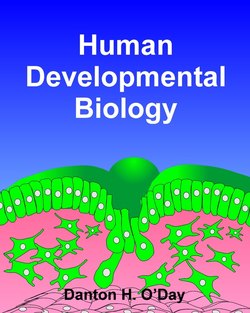Читать книгу Human Developmental Biology - Danton Inc. O'Day - Страница 20
Apoptosis: The Major Events
ОглавлениеThe death of cells is an important part of human cell biology and embryonic development. It occurs during oogenesis, brain development and the formation of our toes and fingers, to name a few events. Apoptosis is the formal name for the controlled regulation of cell death. It involves the activation of specific genes and the activation of signal transduction pathways that underlie the cell death program. Unlike tissue necrosis caused by external damage, apoptosis is a controlled process in which cells show a precise breakdown in a series of well-defined steps that are under active study. Apoptosis allows the body to remove specific cells without damaging surrounding cells and tissues.
In biomedical terms, understanding how to control apoptosis would open up potential avenues for the targeted destruction of tumors and other diseased tissues while leaving normal tissues intact. Brain cell death is a major problem in Alzheimer’s and other neurodegenerative diseases, so understanding what triggers this death and finding ways to prevent it would be a major advance in human medicine.
Apoptosis is characterized by a series of well-defined stages as summarized in the following figure (Figure 3.6) and detailed below.
Figure 3.6. The sequence of events in apoptosis.
The major cellular events in apoptosis:
1.Cell shrinkage: cells become smaller and lose normal cell-to-cell contacts.
2.Chromatin condensation: chromatin initially condenses to the periphery of the nucleus and ultimately nuclear fragmentation occurs. During these events DNA is digested in specific ways leading to what is called “laddering” in DNA gels.
3.Cell membrane blebbing: small and numerous bulges form on the cell surface.
4.Cell fragmentation: cells break up producing what are called “apoptotic bodies”
5.Phagocytosis of “apoptotic bodies”: cell fragments are ingested by macrophages.
